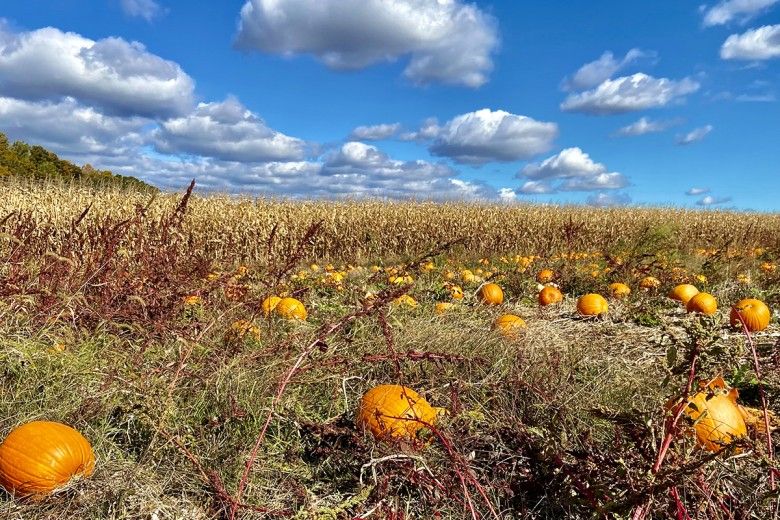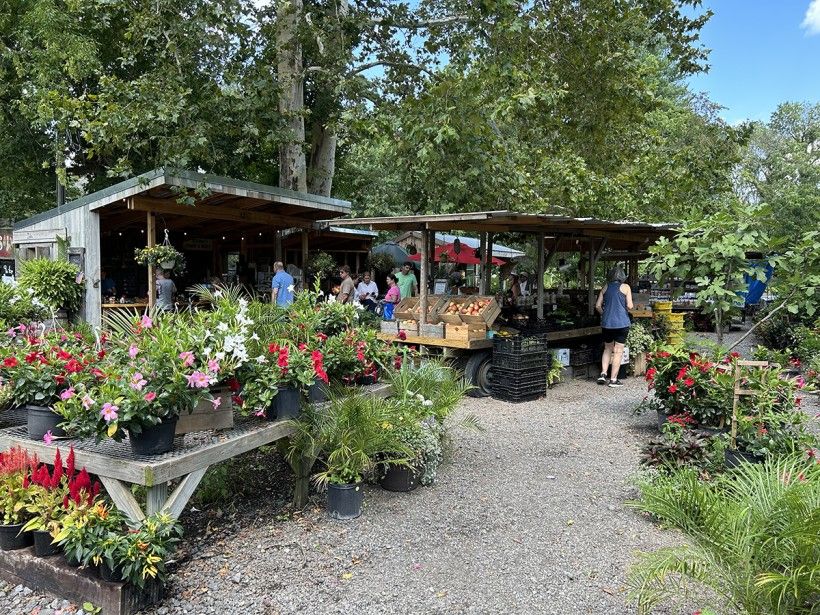Agriculture Spotlight: Fall Harvest

It’s that time of year again when the air becomes cooler, the leaves start to change color, and crops are ready to be harvested. Autumn wouldn’t be the same without a bounty of corn, apples, and pumpkins at your local market, and we have our local farmers to thank for it. But there's a lot that needs to happen both before and after that harvest bounty hits your table.
Read on to learn how crops are harvested, what farmers do to protect the soil over the winter months, and ways you can support your local farm this fall.
Preparing for the harvest
Over 30-percent of Chester County is designated as farmland, and the Brandywine Conservancy has partnered with private landowners, farmers, tenant farmers, municipalities, the county, and the state to protect over 70,000 of those acres in perpetuity. The county also ranks second in the state for the total value of agriculture products sold, and first in total crop production. Suffice it to say, fall is a very busy time for our local farmers. To prepare, farmers need to make sure all their machinery, whether its electric, gas-powered, or horse drawn, is in proper running condition, and storage facilities, such as silos, are clean and ready to be filled. You also may notice more farm vehicles on the road such as harvesters, trailers, and plain sect buggies.

With productive prime soils for agriculture, Chester County farmers are able to grow a variety of field crops such as wheat, corn, soybeans, and an array of forage crops, all of which will soon be ready for harvesting. Additionally, many smaller, specialty producers focus on fruit and vegetable crops–such as SIW Vegetables, which sells its products at local farmers markets and whose land is under a conservation easement with the Brandywine Conservancy, and Two Gander Farm, a CSA located on a Brandywine-owned property. While we start seeing fresh sweetcorn in the farmer’s markets as early as late-June/early-July, the primary harvest of feed corn in Pennsylvania begins in September and lasts through mid-November. Feed corn is typically harvested using machinery, such as a combine that cuts stalks down and removes the kernels from the cob, or, in the plain sect community with a horse or mule-drawn wagon. From here, the corn will be stored or sold to be processed into products for human consumption, livestock feed, or for the production of fuel ethanol.
After the harvest
After crops have been harvested, the work is far from over. Preparing for the upcoming cool season is just as vital. When driving through farmland this time of year, you may notice an unpleasant odor. This is manure being spread to amend the soil before the cold sets in. When spread at proper application rates, manure can act as an alternative to commercial fertilizers, as it is rich in nutrients such as nitrogen and phosphorus and helps to reduce runoff and soil erosion. The use of manure as a soil amendment is a great example of taking something that could potentially have become a pollutant, to being used as resource to protect agricultural fields.
To further protect soil over the winter months, cover crops are often planted in the fall to allow for proper establishment before the first frost. Planting a cover crop, which comes in the form of grasses, legumes, or forbs, has numerous benefits such as reducing soil compaction, limiting erosion, suppressing weeds, increasing the nutrient content and moisture retention of soil, as well as providing habitat and food for insects and wildlife.

Support your local farms
Autumn is not just a busy time for farmers, it is also prime agrotourism season. With many operations open to the public, you can experience a farm firsthand with friends and family. Activities such as pick-your-own fruits and vegetables, corn mazes, pumpkin patches, and vineyards are all great ways to learn and appreciate where our local produce comes from. Please check out Chester County’s 2023 Farm Guide for a full list of farms in our region. With dozens of locations to choose from, there are many opportunities to support your local farm while enjoying the beautiful fall weather.
Sources:
- Agriculture Questions (2023): What Do Farmers Do
- Chester County Ag Council. (2023)
- USDA (2023), Feed Grains Sector at a Glance
- USDA (2023), Cover Crops and Crop Rotation
- USDA (2023), Crop Calendars for United States
- USDA (2017), 2017 Census of Agriculture